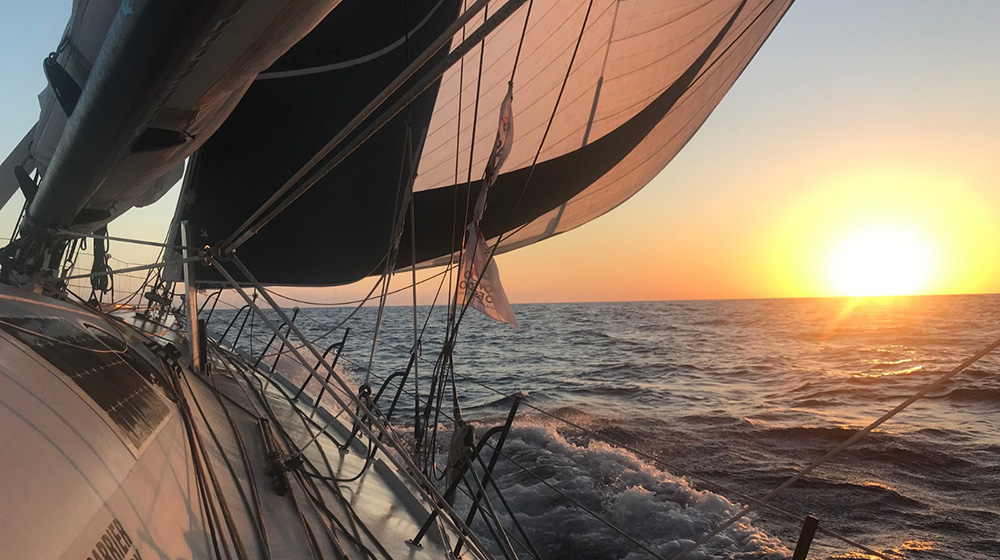
The impressive process of launching a ship
Physics laws are crucial when we are talking about mega-structures. Perhaps, you have asked yourself when seeing massive cargo ships or cruises that are bigger than buildings how it is possible to launch them into the ocean.
Well, the process is named “launching” and it is one of the most important procedures of the entire ship construction process. Depending on the vessel type, we can use four different types: Gravitational type launching, floating-out type, mechanical type and airbag launching.
In a matter of seconds, these ships stabilize in the ocean and are ready to set sail. However, if physics laws are not applied, the consequences can be catastrophic.
The different types of ship launching methods
Gravitational type launching
These can further be divided into three types: longitudinal oiled slideway launching, longitudinal steel (roller slideway launching) and side oiled slideway launching.
Longitudinal oiled slideway launching: This is one of the oldest forms to launch a ship. The ship slides into the water on a slideway using its own weight. Oil or wax is used in the slideway to ease the process.
The main advantage is that it uses simple equipment, and can be used for vessels with different tonnage. However, this coating of oil can pollute the water and the huge pressure on the front part of the vessel can provoke an accident.
Longitudinal steel -roller slideway launching: As a variation, this method uses steel rollers instead of oil to reduce friction while sliding. This method is effective and easy to begin, but the initial installation charges are high.
Side oiled slideway launching: This is one of the most widely used ship launching systems. It started in the 19th century and popularized during World War II. Due to space limitations, it requires less space than the longitudinal slideway launching. This kind of launching requires the vessel to have great stability and many calculations and constant checks are necessary to guarantee its success.
Floating-Out Launching
Floating out type launching is simple, very effective and safe. It consists of carrying out ships built on the dry-dock and launching them by filling this dock with water. This technically is not a type of ship launching procedure, but it is widely used by shipbuilders.
Mechanical Type Launching
Although it can be a broad term as, for instance, longitudinal mechanized slideway launching is included as a mechanical type launching, it centers in a mechanical feature that is required to launch the ship. In this case, construction and maintenance is high, thus it is mainly used for smaller size vessels.
Video from Walter HappyCow
Air bags Launching
This is probably the most innovative and safe technique to launch ships. Just as car airbags protect our head from impact, ship airbags provide support to the hull of the ship. These are made of reinforced rubber layers cylindrical in shape with hemispherical heads that can easily be used for ships of all types and sizes.
Video from Lockheed Martin
The catastrophic consequences of miscalculations
As seen in all ship launching types, all methods involve many calculations and adjusting elements so the launching takes place correctly. In longitudinal and side-slideway launching, it also involves procedures on the internal structure of the ship as propping up part of the bow area.
Nonetheless, despite efforts, mistakes happen and can be disastrous. Proof of these miscalculations are failed launches that, in some cases, have gone down in history.
Our first example is the HMS Albion on June 21, 1898. There is still a fragment of this process (probably one of the oldest films of launching), and although not noticeable how bad the procedure was, the wave created by the HMS Albion carried away a breakwater, killing 30 people.
Video from BFI
Another case was the SS Principessa Jolanda. Its launching took place on September 22nd 1907. After launch, the ship began to sink, tilting to port, meaning it could not balance by righting itself. Efforts to prevent the disaster were not enough and the ship could not be saved. The presumed error was in the calculation of the center of gravity.
A more recent failure, from September 29, 2011, involves the luxury ship SS Jiugang. The shipyard decided to launch the vessel by longitudinal slideway launching, and once they slide the ship into the water, the ship did not even float. According to Maritime Professional, $2.5 million ended in the bottom of the pond.
Video from VolcanicThunder
Coming up on Nautical Channel, Wind N’ Miles brings us closer to the restoration process of a boat and its final launch to the ocean. The repair in the dry dock will be done in record time, and comedy and drama await at the Bully Boat Garage. Will their launching procedure be successful, or will they end up in the list of failed miscalculations? Stay up to date to find out!













_v2.svg)
_v2.svg)









_v2.svg)


